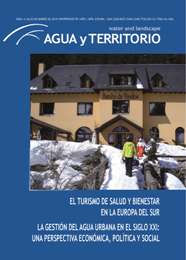La innovación en la arquitectura portuguesa del spa
DOI:
https://doi.org/10.17561/at.v0i6.2806Palabras clave:
turismo, termalismo, arquitectura, inovación, PortugalResumen
El espacio físico siempre ha sido esencial en la evolución histórica de la hidroterapia. La arquitectura del spa se ha consolidado como una rama especializada de la ciencia, la articulación de los planes y programas de disciplina de la geología, la ingeniería y la medicina. Los higienistas del siglo XIX fueron los que dieron soluciones constructivas y arquitectónicas, donde el diseño y la singularidad de las formas significaban una escenografía ideal, a un esfuerzo creado por el "arte de curar", creando un juego que se extiende entre lo que se requiere de un tratamiento médico prescrito y los rituales de ocio sugeridas por la vida diaria del paciente o cliente térmica (acquista). De manera innovadora, el microcosmos termal portugués también tuvo sus propios valores, soluciones ingeniosas y una arquitectura apropiada adecuada a las posibles inversiones. En sus balnearios, Portugal tiene y sigue teniendo una fuente potencial de desarrollo, que creativamente jugará un papel importante en la construcción de ambientes que promueven la salud y el ocio.
Descargas
Descargas
Publicado
Número
Sección
Licencia
© Universidad de Jaén
Los originales publicados en las ediciones impresa y electrónica de esta Revista son propiedad de la Universidad de Jaén siendo necesario citar la procedencia en cualquier reproducción parcial o total.
Salvo indicación contraria, todos los contenidos de la edición electrónica se distribuyen bajo una licencia de uso y distribución “Creative Commons Reconocimiento 4.0 España” (CC-by). Puede consultar desde aquí la versión informativa y el texto legal de la licencia. Esta circunstancia ha de hacerse constar expresamente de esta forma cuando sea necesario.














